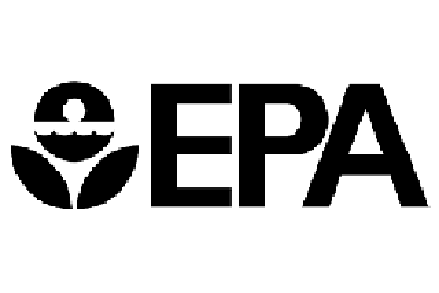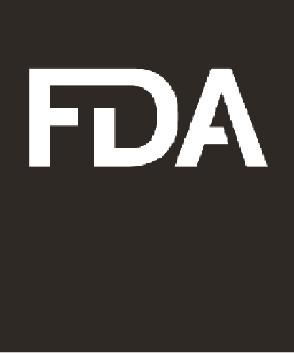Frequently Asked Questions
Biotechnology techniques can help to make many products, including medical, agricultural, industrial, consumer and research products. In the realm of agriculture, biotechnology techniques can help in producing new varieties of plants, animals, and microorganisms or new substances derived from these sources. Examples of products range from insect-protected and/or herbicide-resistant crops, to apples that do not readily brown when sliced, to algae modified to produce biofuels or plastic, to human and animal vaccines and pharmaceuticals.
Yes. The current federal regulatory system for biotechnology products protects human, animal, and plant health and the environment. Federal agencies have carefully assessed biotechnology products currently on the market and found them to meet the health and environmental protection goals and regulatory requirements for their intended applications.
Three federal agencies are primarily responsible for regulating biotechnology products in the United States—the Environmental Protection Agency, the Food and Drug Administration, and U.S. Department of Agriculture:
- Environmental Protection Agency
The mission of the U.S. Environmental Protection Agency (EPA) is protection of human health and the environment. As part of that mission, EPA regulates the sale, distribution, use and testing of pesticides in order to protect health and the environment, regardless of how the pesticide was made or its mode of action. This includes biopesticides that are produced using biotechnology. EPA is also responsible for determining the amount of biopesticide residues that can safely be in food. EPA also has oversight responsibilities for a wide range of commercial, industrial, and consumer applications of certain microbial products of biotechnology (new microorganisms) in commerce or commercial research. However, certain product classes such as food, drugs, and cosmetics are specifically excluded from EPA’s jurisdiction.
Learn more about EPA's role in regulating biotechnology
- Food and Drug Administration
The mission of the U.S. Department of Health and Human Services’ Food and Drug Administration (FDA) is to protect and promote public health. As part of that mission, FDA oversees the safety of most foods for humans and animals, including those produced using biotechnology; the safety and effectiveness of intentional genomic alterations in animals produced using biotechnology; and the safety and effectiveness of human and animal drugs and the safety, purity, and potency of human biologics, including drugs and human biologics from plants and animals produced using biotechnology.
Learn more about FDS's role in regulating biotechnology
- U.S. Department of Agriculture
The mission of the U.S. Department of Agriculture (USDA) Animal and Plant Health Inspection Service (APHIS) is to protect agriculture from pests and diseases. In that role it regulates biotechnology products that could pose a risk to plant health. APHIS also has oversight over any biotechnology products that are pests to or cause disease in livestock, or that could introduce pests to or cause disease in livestock, with the goal of protecting livestock. USDA also has regulatory oversight over products of biotechnology that are included in veterinary biologics, and ensures that veterinary biologics are pure, safe, potent and effective.
Learn more about USDA's role in regulating biotechnology
Together these agencies constitute a framework of oversight for biotechnology products. Depending on its characteristics and intended use, a biotechnology product may be subject to law(s) administered by one, or more, of these Federal agencies. See, for example, the case studies discussed in the 2017 Update to the Coordinated Framework that demonstrate how a developer might navigate the regulatory processes.
The National Biotechnology Food Disclosure Standard Law of 2016 requires food labeling to disclose that a product is “bioengineered” if it contains genetic material that has been modified through in vitro recombinant deoxyribonucleic acid (DNA) techniques and for which the modification could not otherwise be obtained through conventional breeding or found in nature. The Agricultural Marketing Service (AMS) of USDA issued a regulation to implement this requirement. In addition, such food is also subject to FDA labeling requirements that apply to all food, including food that isn’t produced using biotechnology.
View USDA's Agriculture Marketing Service bioengineered Labeling
The federal government regulates biotechnology products using several health and environmental safety laws. Under these authorities, each of the agencies has established regulations, policies, and guidance, as needed, to address various types of biotechnology products. The laws that EPA, FDA, and USDA use to regulate biotechnology products are:
- Plant Protection Act (PPA) administered by USDA
- Animal Health Protection Act administered by USDA
- Federal Food, Drug, and Cosmetic Act (FD&C Act) administered by FDA
- Public Health Service Act (PHS Act) administered by FDA
- Federal Insecticide, Fungicide and Rodenticide Act (FIFRA) administered by EPA
- Federal Food, Drug and Cosmetic Act (FD&C Act), Section 408 administered by EPA
- Toxic Substances Control Act (TSCA) of 1976 and as amended by the Frank R. Lautenberg Chemical Safety for the 21st Century Act administered by EPA
- Endangered Species Act (ESA administered by EPA and FDA
In addition, under the National Environmental Policy Act of 1969 (NEPA), FDA and USDA evaluate all major agency actions to determine whether the actions will have a significant impact on the human environment. EPA regulates the environmental impact of biotechnology products under the laws listed above. For a detailed description of the regulatory framework, see the original 1986 Coordinated Framework and the 2017 Update to the Coordinated Framework. And, as noted above, under the National Bioengineered Food Disclosure Standard Law, AMS/USDA established a mandatory labeling standard to disclose that a human food is “bioengineered.
In 1986 the federal government addressed the question of whether the regulatory framework that pertained to products developed using more traditional techniques was adequate to ensure the safety of newer types of products developed using biotechnology. The federal government determined that existing laws were adequate to ensure safety, with the caveat that additional regulations might, in time, have to be issued under these laws as newer, more novel products were introduced.
When the federal government updated the Coordinated Framework in 2017, it said again that these policy principles would continue to serve as guidance for the regulation of biotechnology products. The agencies use Federal statutes and implementing rules to regulate products based on specific uses, so products with the same use are subject to the same types of oversight by the relevant regulatory agency(ies). For a detailed description of the regulatory framework, see the original 1986 Coordinated Framework and the recent 2017 Update to the Coordinated Framework.
This Unified Website for Biotechnology is an entry portal to the federal government’s oversight for biotechnology products and it helps the public and developers answer questions about how the government regulates these products. It provides links to relevant materials that the three agencies primarily responsible for oversight of biotechnology products—EPA, FDA, and USDA— have each placed on their websites. EPA, FDA, and USDA welcome developers of biotechnology products to contact the agencies. On this Unified Website, we have set up a form that will allow users to submit questions and comments to the biotechnology regulatory agencies. We’ve also identified specific points of contact for each agency to whom you can address agency-specific questions. Note also that each individual agency’s website provides information on how to contact the agency, including an email box for submitting your inquiry.
EPA's role in regulating biotechnology
This website is not intended for regulatory submissions for product developers. Each regulatory agency has its own specific application procedures that must be followed. See individual agency websites for this information.
EPA's role in regulating biotechnology
Depending on its characteristics and intended use, a biotechnology product may or may not be reviewed by one or more, U.S. regulatory agencies. Table 2 of the 2017 Update to the Coordinated Framework summarizes current responsibilities and coordination across EPA, FDA, and USDA for the regulatory oversight of biotechnology products. You can find case studies illustrating the path various product types follow through the U.S. regulatory structure.
Yes. EPA, FDA, and USDA will refine the Coordinated Framework in response to future scientific developments. The agencies have already shown that they can modify or clarify regulations as science progresses to address any potential risks associated with future biotechnology products and their uses. The agencies anticipate that the numbers, complexity, and speed with which biotechnology products are likely to come out of research laboratories will increase over time.
Genome-editing is a biotechnology technique used to modify genetic information within an organism more precisely and efficiently than previous techniques. Genome editing can be used to add, remove or alter genetic information in an organism’s genome and thereby change the characteristics of an organism. EPA, FDA, and USDA are currently developing risk-based approaches to regulating products developed using from genome-editing. To follow developments in this area, refer to individual agency websites for current information.
Yes. The three regulatory agencies use various mechanisms to ensure communication and coordination, as appropriate and necessary. Under the Coordinated Framework for Regulation of Biotechnology, the three agencies work to operate their programs in an integrated and coordinated fashion. The framework directs that EPA, FDA, and USDA together should provide a network of oversight for the full range of plants, animals, and microorganisms produced using biotechnology, with each agency using its statutory authorities and regulations to be sure that the biotechnology products each agency regulates are safe. The agencies use formal and informal interagency working groups and share information, as appropriate. The agencies continue to work cooperatively as we develop our policies or approaches related to future products of biotechnology within each of agency’s jurisdiction.
The Unified Website contains a page that provides a variety of resources for general biotechnology and scientific information, federal biotechnology documents and initiatives, and biotechnology laws and regulations. Some of the following topics can be found on our resources page:
- Regulation of mosquito-related products
- Agricultural biotechnology education and outreach initiative
- AMS’ implementation of the National Biotechnology Food Disclosure Standard Law
- Interagency Task Force on Agriculture and Rural Prosperity


